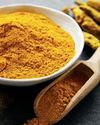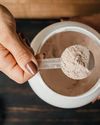試す 金 - 無料
MICROPLASTICS: THE BIG PROBLEM WITH SMALL PARTICLES
WellBeing
|Issue 218
The scientific community has verified that microplastic particles are found everywhere in nature and inside living organisms. What would it take to rein in this problem?

Plastics have long been dismissed by their critics as an environmental headache but difficult to completely avoid in the modern world.
Now, new research is uncovering an increasing range of health risks that they pose.
The normal definition of microplastic is plastic fragments or fibres that measure 5mm or less. These are either a material that is already micro-sized when it enters the environment or, far more commonly, the result of the breakdown or shedding of a plastic material. Sometimes they can be added to products, as in the case of plastic microbeads added to cosmetic products.
Microplastics may contain any of more than 16,000 different plastic chemicals, of which at least 4200 (26 per cent) are considered “highly hazardous” to human health and the environment, including PFAS, bisphenols and phthalates. In addition, microplastics have a tendency to absorb and concentrate harmful pollutants in the environment.
This form of human-generated contamination is so pervasive that it is found in environments that would otherwise be considered pristine, such as the peaks of the highest mountains, Antarctic Sea ice, the North Pole and the Mariana Trench, the deepest point in the world’s oceans. It has colonised everywhere in the world, to a greater or lesser concentration, and this includes the human body.
The role of the plastics industry
In the period following World War II, plastic took off, aided by a consumer boom, coupled with industry-driven messaging encouraging a wasteful shift towards single-use disposables. At its end of life, most is landfilled, or incinerated via waste-to-energy, a type of power generation that is more carbon-polluting than burning coal. The average global plastic recycling rate remains under 10 per cent.

このストーリーは、WellBeing の Issue 218 版からのものです。
Magzter GOLD を購読すると、厳選された何千ものプレミアム記事や、10,000 以上の雑誌や新聞にアクセスできます。
すでに購読者ですか? サインイン
WellBeing からのその他のストーリー

WellBeing
In Season
These are the fruit and vegetables that are currently in season and so will be the freshest.
1 min
Issue 218

WellBeing
Navigating complementary medicines
For practitioners, quality and evidence matter more than ever. SFI Health is raising the bar with gold-standard formulations that don't compromise on clinical integrity.
5 mins
Issue 218

WellBeing
Too much of a good thing
Even well- intentioned health choices can sometimes contribute to unexpected problems.
3 mins
Issue 218

WellBeing
What we've been up to
WellBeing's editor Dana has been soaking up slow moments of warmth this winter.
1 min
Issue 218

WellBeing
Could creatine have a dark side?
Creatine is a multitalented wonder potion we all need to protect us against the ravages of ageing.
3 mins
Issue 218

WellBeing
ACS Distance Education
The secret to a successful career.
3 mins
Issue 218

WellBeing
Yoga for Energy Vampires
In yoga, prana is our life force and acts as a bridge between universal consciousness and matter.
8 mins
Issue 218

WellBeing
Chinese medicine dietary therapy
Food therapy may augment TCM herbal therapy or sustain improvements after herbal treatments have ceased. It may also be used in prevention, to nourish health and prolong life.
3 mins
Issue 218
WellBeing
AcuEnergetics®
AcuEnergetics received widespread attention in the media when founder Kevin Niv Farrow treated the captain of the NSW State of Origin team Boyd Cordner for a calf injury. Since then, the unique treatment modality has continued to capture the attention of other high-profile sports stars.
1 mins
Issue 218

WellBeing
Honouring a legacy in aromatherapy
Our oils are extracted with precision and care to ensure the active plant compounds remain intact, preserving the therapeutic benefits from field to bottle.
3 mins
Issue 218
Listen
Translate
Change font size
